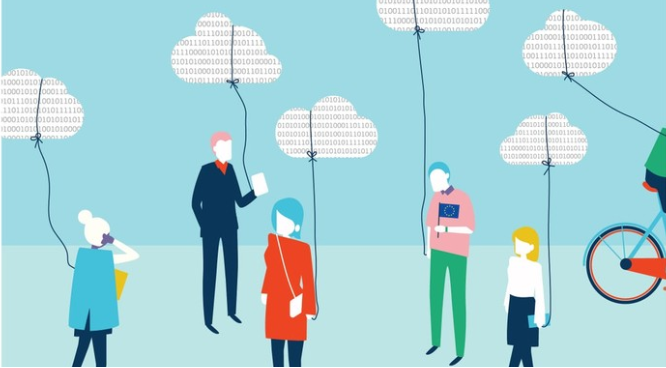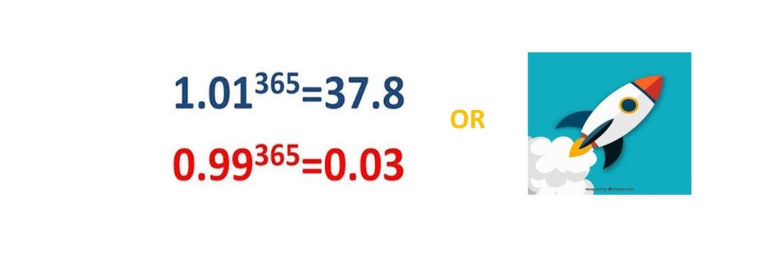Kristallnacht, or simply Pogromnacht, occurred 80 years ago on November 9-10, 1938. The Pogrom was…
Double Trouble? Why Ignoring People and Planet Can Sink Your Profits
Sustainability is not a cost; it’s an investment in the future. Paul Polman, former CEO of Unilever

In today’s rapidly changing world, where environmental concerns are growing and social issues are gaining more prominence, businesses are realizing the need to adopt sustainable practices.
Sustainability is not just a buzzword; it has become a necessity for businesses to thrive in the long run. One framework that helps organizations balance their financial goals with the well-being of society and the planet is the Triple Bottom Line (TBL).
This article delves into the concept of the Triple Bottom Line, its importance, measurement, and implementation methods, and provides examples of companies that have embraced this approach.
Triple Bottom Line: What Is It?
The concept of the “Triple Bottom Line” (TBL) has emerged as a solution for businesses striving to make a positive impact on people and the planet while also generating profit. This framework goes beyond traditional profit-oriented business models.
This framework was formalized by business author and sustainability expert John Elkington in 1994 in his book, “Cannibals With Forks: The Triple Bottom Line of 21st Century Business.“
During the 1990s, Elkington foresaw a shift in the balance of influence, predicting that corporations would exert more sway in shaping the modern world than governmental and non-governmental organizations (NGOs).
He astutely acknowledged the pivotal role consumers would play in pressuring businesses to prioritize ethical decisions regarding social morality and environmental sustainability. Elkington envisioned his triple bottom line as a mutually beneficial scenario for businesses, emphasizing the societal advantages stemming from ethical business practices.
With an increasing emphasis on environmental and social issues among consumers, integrating the TBL into business practices has become a crucial aspect of long-term success.
Amazon places a strong emphasis on the triple bottom line, addressing the pillars of people, planet, and profit. In terms of people, the company has implemented a minimum wage of $15 per hour for its U.S. employees, prioritizing their well-being and safety.
On the planet front, Amazon is actively working towards becoming net-zero carbon by 2040, investing in renewable energy projects and sustainable packaging with the goal of using 100% renewable energy by 2025
Downsides of TBL
While the triple bottom line (TBL) framework is widely acknowledged for its attempt to integrate social, environmental, and economic considerations into business decision-making, it is not without its drawbacks. It is imperative to recognize the potential downsides associated with the TBL approach in the context of business sustainability.
The following are notable cons:
- Subjectivity and Lack of Standardization: The TBL relies on subjective assessments, hindering standardization and comparability across organizations.
- Trade-offs and Conflicting Objectives: Pursuing one dimension of the TBL may conflict with others, leading to trade-offs and challenges in achieving balanced goals.
- Complexity and Resource Intensity: TBL implementation demands extensive data and resources, posing a burden, especially for smaller businesses.
- Short-Term Financial Sacrifices: TBL commitment may result in short-term financial sacrifices as sustainability investments may not yield immediate returns.
- Green washing Risks: Companies may engage in green washing, exaggerating sustainability efforts without substantial changes, undermining credibility.
- Global Variances and Cultural Sensitivity: TBL applicability varies globally, challenging uniform implementation across diverse regions and cultures.
- Limited Financial Focus: Critics argue TBL may divert attention from core financial objectives, potentially impacting profitability.
- Regulatory Compliance Challenges: Lack of standardized regulations for TBL reporting creates compliance challenges, hindering effective communication with stakeholders.
Triple Bottom Line: What Are The Three P’s?
The three P’s of the Triple Bottom Line are people, planet, and profit. These three dimensions capture the core elements that sustainable businesses need to address.
People: Social Impact of The Triple Bottom Line
This dimension emphasizes the social impact of a business. Addressing social issues beyond the organization is equally important. Businesses have the potential to create a positive impact on communities by actively supporting social causes, engaging in philanthropy, and volunteering.
By considering the needs and aspirations of the wider society, companies can contribute to social progress in tangible ways.
- Embracing Social Responsibility
This includes fair labor practices, diversity and inclusion initiatives, and community engagement. People are at the heart of any business, from employees to customers and the broader community.
Prioritizing the well-being and development of employees is vital to building a sustainable business. This means providing fair wages, fostering a positive work environment, and supporting their personal and professional growth.
By investing in employee well-being, businesses can boost motivation, productivity, and, ultimately, profitability.
- Supporting Nonprofit Organizations:
TBL-oriented businesses often engage with nonprofit organizations to address social issues. By supporting community initiatives and charitable causes, companies can make a positive impact on society while building a solid and supportive corporate culture.
- Adopting Sustainable Practices
Sustainable business practices extend to social considerations, such as promoting fair wages, ensuring workplace safety, and respecting human rights. Companies adhering to the TBL framework actively seek to create a positive social impact through their day-to-day operations.
- Upholding Human Rights
The TBL emphasizes the importance of upholding human rights throughout the supply chain. This includes fair treatment of workers, avoiding exploitation, and ensuring ethical sourcing practices. By prioritizing human rights, businesses contribute to a more just and equitable global society.
When discussing corporate social responsibility, it would be remiss not to mention the significant contributions made Bristol Myers Squibb. Their efforts in this area have been noteworthy and deserve recognition. They offer a comprehensive benefits package that includes healthcare, dental, vision, and life insurance. They also offer generous parental leave policies, tuition reimbursement, and employee discounts.
In addition, Bristol Myers Squibb is committed to diversity and inclusion in its workforce. They have a number of programs and initiatives in place to promote diversity and inclusion, such as unconscious bias training, mentorship programs, and employee resource groups.
Further, Bristol Myers Squibb is a major supporter of its communities. They invest in a variety of programs and initiatives that address the needs of the communities in which they operate, such as education, healthcare, and economic development.
Planet: Environmental Impact of the Triple Bottom Line
The environmental dimension of the Triple Bottom Line focuses on minimizing the negative environmental impact caused by business operations. It involves efforts to conserve resources, reduce carbon emissions, promote clean energy, and adopt sustainable practices throughout the supply chain.
- Fostering Environmental Responsibility
One of the core principles of the TBL is environmental responsibility. Businesses committed to this model actively seek ways to minimize their ecological footprint, embracing sustainable practices to protect the environment.
- Addressing Climate Change:
As climate change becomes an increasingly pressing global issue, the TBL provides a framework for businesses to contribute positively. By adopting eco-friendly technologies and practices, companies can mitigate their impact on climate change and contribute to a more sustainable future.
- Promoting Environmental Sustainability
Sustainable businesses prioritize long-term environmental sustainability. This involves not only minimizing negative impacts but also actively participating in conservation efforts, resource management, and the promotion of biodiversity.
- Mitigating Environmental Damage
The TBL encourages businesses to go beyond compliance with environmental regulations. Companies adopting this approach actively seek ways to repair and restore ecosystems affected by their operations, contributing to a net-positive environmental impact.
Concerning the planet, Dell is a leader in sustainable technology, committing to 100% sustainable packaging by 2030 and actively engaging in recycling old electronics while using recycled materials in its products.
Profit: Economic Impact of The Triple Bottom Line
While people and the planet are essential considerations, profit is also a crucial aspect of any business. In fact, it is the profit dimension that enables companies to sustain their efforts in the long run. However, the TBL approach recognizes that profitability does not have to come at the expense of social and environmental responsibility.
- Financial success
Sustainable businesses understand that financial success is closely intertwined with ethical practices. By incorporating social and environmental values into their strategies, companies can build a strong brand reputation, attract conscious consumers, and gain a competitive advantage. This can result in increased customer loyalty, enhanced market positioning, and, ultimately, higher profits.
- Creating Shareholder Value
The TBL model recognizes that creating value for shareholders is not just about financial gains. By addressing social and environmental concerns, companies can foster goodwill, trust, and loyalty among shareholders, enhancing their overall value proposition.
- Aligning with Business Strategy
Integrating the TBL into business strategy ensures that economic decisions are aligned with broader societal and environmental goals. This alignment not only enhances a company’s reputation but also positions it as a responsible corporate citizen.
Apple has demonstrated a noteworthy ability to increase its profits while simultaneously ensuring the sustainability of its business operations. This is an exemplary approach, as it requires a careful balance between financial success and ecological responsibility. Apple consistently delivers strong financial performance while maintaining its commitment to people and planet.
They invest heavily in research and development, resulting in innovative products and services that attract a loyal customer base. Their focus on sustainability has also resonated with consumers, further strengthening their brand image. Apple’s revenue in 2023 was $383.29 billion, and their net income was $96.9 billion. They are one of the most profitable companies in the world.
Is It Important To Focus On The Triple Bottom Line?
The Triple Bottom Line is important for several reasons. Firstly, it encourages businesses to take a proactive approach to addressing societal and environmental issues. By integrating social and environmental considerations into their strategies, companies can contribute to a more sustainable and equitable world.
Secondly, the TBL framework helps businesses in risk management and long-term planning. It enables them to identify potential social and environmental risks that could impact their operations, reputation, and financial viability. By addressing these risks early on, businesses can mitigate potential negative impacts and ensure long-term success.
Furthermore, the Triple Bottom Line can enhance a company’s brand image and reputation. Consumers are becoming increasingly conscious of the social and environmental impact of the products and services they choose.
Measurement of the Triple Bottom Line
Measuring the Triple Bottom Line requires a comprehensive assessment of all three dimensions: people, planet, and profit. By establishing relevant key performance indicators (KPIs) and regularly tracking and reporting progress, businesses can effectively measure their Triple Bottom Line performance.
Here are some commonly used methods and indicators:
Social Measures
Measuring the social impact involves
- Assessing Employee Satisfaction
- Turnover Rates
- Diversity And Inclusion Metrics
- Social Impact Projects
- Community Engagement Initiatives
Environmental Measures
The assessment of environmental factors that impact the conservation of natural resources and their long-term feasibility is of paramount importance. It is essential to accurately measure these variables to ensure appropriate management and conservation strategies are implemented. It includes
- Land Use/Land Cover
- Water Quality
- Air Quality
- Energy Depletion,
- Natural Resources
- Toxic Waste
- Solid Waste
- Sulfur Dioxide Concentration
Financial Measures
The financial aspect remains crucial, and traditional financial measures such as revenue, profitability, return on investment, and market share should be considered. However, it’s essential to integrate the other two dimensions to gain a comprehensive understanding of a company’s overall performance.
- Personal Income
- Return On Investment (ROI)
- Market Share
- Net Profit
- Output Per Employee Or Per Unit Of Input.
- Cost Per Unit Of Production Or Service
- Financial Stability
- Employee Training And Development
- Long-Term Investments
Putting The Triple Bottom Line Into Practice
Implementing the Triple Bottom Line requires a systematic approach that integrates sustainability into all facets of a business. Here are some key steps to consider:
Leadership Commitment: Senior management must champion the TBL framework and embed sustainability into the company’s mission, vision, and values.
Stakeholder Engagement: Identifying and engaging with key stakeholders, including employees, customers, suppliers, and the local community, is crucial to understanding their needs and aligning company objectives with societal and environmental goals.
Setting Goals: Establish clear goals and targets that reflect the three dimensions of the Triple Bottom Line. These goals should be specific, measurable, achievable, relevant, and time-bound (SMART).
Integration: Integrate sustainability considerations into all business functions, including operations, supply chain management, marketing, and product development.
Measurement and Reporting: Develop robust methods for tracking and reporting on social, environmental, and financial performance. Regularly communicate progress and engage stakeholders in the process.
Continuous Improvement: Embrace a culture of continuous improvement by regularly reviewing performance, seeking feedback, and adapting strategies accordingly.
The Triple Bottom Line and the Future Generation
The TBL is a critical tool for building a sustainable and equitable world for future generations. By prioritizing environmental stewardship and social responsibility, businesses contribute to a legacy that goes beyond short-term gains.
The TBL encourages businesses to adopt sustainable practices that promote the responsible use of resources, reduce waste, and contribute to the overall well-being of the planet. This proactive approach sets the stage for a more sustainable future.
Businesses committed to the TBL often explore renewable energy sources as part of their sustainable practices. This not only reduces the carbon footprint but also contributes to the development and adoption of cleaner energy alternatives, benefitting future generations.
Conclusion
In conclusion, integrating the Triple Bottom Line into business operations is no longer an option but a necessity for companies striving for long-term success in today’s world.
Emphasizing the well-being of people, the preservation of the planet, and the generation of profit, sustainable businesses have the opportunity to make a positive impact on society and the environment.
By choosing conscious and sustainable brands like Mutombo Coffee, where every cup contributes to the well-being of people and the planet and the pursuit of profit with a purpose.
Join the movement towards a more sustainable future by making Mutombo Coffee your go-to choice. Together, we can contribute to the Triple Bottom Line and create positive change for people, the planet, and profit.
Founded by NBA Hall of Famer and global humanitarian, Dikembe Mutombo and social investor Bob Bush, Mutombo Coffee was created to amplify the mission and values of our corporate partners while supporting African and Latin American farmers.
References



